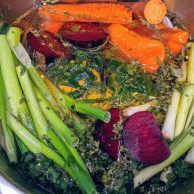- FINALE BULBING FENNE – 75-80 days, Open-pollinated
Vigorous plants produce bolt-resistant, huge (4”!) juicy bulbs with a slightly flattened shape. Finale stores well, keeping good quality and maintaining a crisp, juicy texture and gentle anise flavor.
Plants
CABBAGE
- GOLDEN ACRE – 55 days from transplant. Very early, round-headed cabbage, nearly 5 pounds per head. Excellent taste.
- RED ACRE– 75 – 100 days from transplant. Small, compact plants. Good for storage and resistant to splitting.
CAULIFLOWER
- DePURPLE CAULIFLOWER – matures ~68 days from transplant, Hybrid
Stunning lavender-pink florets atop creamy stems keep their color when cooked and impart glamour and nutty sweet flavor to a sauté, stir-fry, fritter, soup – you name it! The distinctive color comes from anthocyanins, the immune-boosting antioxidants found in red wine. Uniform 7″ domed heads on vigorous plants are wrapped tight in big leaves for good protection. Matures early – partner it with Graffiti to extend your season of purple cauliflower enjoyment. - EARLY SNOWBALL’ – 55 days, heirloom, OP. Heads are about 5-6” across (3-5 lb.) and quite erect; smooth tops are pure white and mature uniformly. Plants are medium sized with good foliage cover, and foliage is tasty, too. Cauliflower is a heavy feeder, so transplant into rich, well composted soil and side dress w/ organic fertilizer when buds begin to form.
- SONG TJS-65 CAULIFLOWER – matures ~42 days from transplant, Hybrid
This exceptionally sweet and extra-early cauliflower is sweeter and more tender than standard, white-stemmed varieties, with longer stems that are exceptional for dipping. Kitchen prep work is quick, as a few knife strokes will cut most of the florets from the heads. Typically harvested after florets have elongated and curds have started to separate, though harvesting at the same stage as standard types is acceptable. Song TJS-65 performs better in hot weather and below-average fertility than standard types in our trials. Also known as sweet-stem or loose-curd cauliflower. - VITAVERDE
CELERIAC
- BRILLIANT
COLLARDS
- GEORGIA SOUTHERN – 50 – 80 days to harvest. This variety has been a staple in the South since the 1800s. The large leaves can be steamed, wraps, and salad greens (when young). Sweeter after a frost.
CUCUMBERS
- ARMENIAN – 65 days, heirloom. 12-18″ crisp, juicy, sweet, burpless, tolerates dry, hot
- LEMON
- MARKETMORE 76.70 days, Open pollinated. Highly reliable, long-bearing, very sweet fresh slicing cuke, a home-garden favorite.
- NATIONAL PICKLING
- SILVER SLICER – Open pollinated, 54 days. A great slicer with excellent flavor and lovely creamy white, thin, smooth skin. Fruits are 2” wide, 5-6” long, similar to Boothby Blonde with a longer, narrower shape and better flavor. Bred by Cornell University for resistance to powdery mildew. Superb juicy, sweet and mild flavor and good crunch.
EGGPLANT
- BLACK BEAUTY– 75-80 days, Heirloom OP, Classic
This 1902 Burpee introduction has perfect fruits earlier than other varieties. It soon became the classic farmers market and garden standard for eggplants, delicious grilled, baked, or fried. Broad, lustrous, purplish-black, egg-shaped 4” to 6” diameter (up to 2 lb) fruits are borne well off the ground on 18 to 24” plants; the skin is tender, so no need to peel it. - BLACK SHINE – 65 days, Hybrid, Asian
This very attractive Japanese hybrid eggplant has long fruit with black skin. The glossy fruits have tender, sweet, bitter-free high-quality flesh and grow over 8 inches long, weighing over 8 oz. Upright plants are early and prolific producers. Recommended for container, home garden and greenhouse growing. - DIAMOND – 70 days, Open-pollinated, Classic. SeedSavers Exchange collected this prolific, best-selling eggplant from Ukraine in 1993. Known for green-tinted flesh with excellent mild, non-bitter flavor and fine, creamy texture, the long dark purple 9” x 3” fruits are borne in clusters of 4 to 6 on 2’-tall, healthy plants. Yield is often equal to hybrids.
- GALINE – 72 days, F-1 Hybrid. Classic. Very early, dependable Italian-style eggplant with mild, creamy-fleshed, glossy black fruits averaging 1 lb.
- LISTADA DI GANDIA – 80-90 days. Spanish Heirloom
Stunning, sweet, mild, thin-skinned, never-bitter eggplants on heavy-yielding plants to 14” tall. The beautiful purple and white striped 8” oval fruits have firm texture for breading and frying for classic Italian and Spanish dishes and Indian curries. They don’t require salting to extract liquid or bitterness; thrives in hot weather and in greenhouses. - ORIENT EXPRESS – 58 days, F-1 Hybrid. Asian.
A very dependable, very early and very adaptable variety, with tender, mild-flavored, never bitter, quick-cooking flesh. High-yielding plants produce armloads of attractive, slender, glossy fruits 8-10” long x 1 ½ – 2 ½” diameter. Ready up to 2 weeks before many other varieties, and sets fruit in cool weather and under heat stress. Can do well in containers. - PINGTUNG LONG – 65 days, OP, Asian.A prolific Chinese eggplant with slightly curved, glossy bright purple fruit with tender, sweet, bitter-free flesh; steady yield and can bear as many as 20 fruits each; resistant to bacterial wilt. Its color is especially attractive if harvested at 9” long and 1.5 to 2” wide., as skin darkens as it matures.
- PURPLE COMET – 70 days from transplant, hybrid, Asian-type.
Big yields of long-fruited Asian type eggplant; fruits can reach 10” long and 1.5 to 2” diameter. The firm white flesh is bitter-free, seed development is slow, and the rich violet skin is thin and tender. Plants are robust, with extra-large, tropical-looking foliage and showy purple flowers, and beautiful purple fruits. - PURPLE PICKLING -90 days from transplant, OP, Italian.
This pear-shaped Italian heirloom variety is traditionally used to make eggplant relishes like Caponata, but is equally suited to grilling, roasting, and baking and stewing. Fruits up to 8″ long are borne in abundance on purple-stemmed, thornless plants. - ROSA BIANCA – 80-85 days, Heirloom OP, Italian.
A lovely Sicilian heirloom with rosy pink fruit streaked with white and violet. Plump, rounded and slightly fluted 5-6” fruits have mild, creamy flavor, no bitterness and few seeds. Perfect for slicing, baking, roasting. Good yields.
GREENS
- ARUGULA: Astro (spring), Ice Bred (fall), Wild Arugula
- MIZUNA
- MUSTARD: Red Giant, Miz America
- PAK CHOI
- JOI CHOI
- TATSOI
- PERENNIAL SPINACH (HABLITZIA)
- SHISO
LETTUCE, BUTTERHEAD / BIB
- BUTTERCRUNCH
- MARVEL OF FOUR SEASONS
- SKYPHOS
- SPECKLED AMISH
- TOM THUMB
LETTUCE, LEAF
- GREEN SALAD BOWL
- LOLLA ROSSA
- MERLOT
- RED SAILS
- RED SALAD BOWL
- STARFIGHTER MTO
LETTUCE, ROMAINE
- JERICHO
- FORELLENSCHLUSS
- ROUGE D’HIVER
- LITTLE GEM
LEEKS
- BLUE SOLAISE – 100 – 120 days from transplant. Beautiful 19th century French historic variety with truly blue-colored leaves that turn violet after a cold spell. Very large 15-20″ stalks are sweet and flavorful. Extremely hardy, good for short-season areas and winter harvest.
- KING RICHARD – 75 days from transplant. ‘King Richard’ produces extra long white stems early. Cold tolerant to 20°F and can be left in the garden for an extended harvest.
MELON
- MINNESOTA MIDGET
- NOIR DE CARMES
- TUSCANY
ONIONS
- PATTERSON – (Yellow, storage) plants, 104 days, ~30 per half-bundle or ~60 per bundle
- REDWING – (red, storage) plants, 115 days, ~30 per half-bundle or ~60 per bundle
- WALLA WALLA – (yellow, sweet) plants, ~30 per half-bundle or ~60 per bundle
- SPECIALTY VARIETIES – in pots (Ailsa Craig, Red Marble and Gold Coin Cipollini, Rossa di Milano, Walla Walla)
POTATOES
- HARVEST MOON -85-100 days.Round tuber with purple skin and deep yellow flesh. Firm texture after cooking, with a nutty taste. Good for roasting, baking, soups, and chips. Stores excellently.
- GERMAN BUTTERBALL – 110 days. This potato offers everything you could want in a potato: heirloom quality, deep golden flesh, and a delightfully mild flavor. Versatile for every kind of preparation. Best if harvested when small to medium sized. Superior storage. Days to maturity: approximately 110 days.
- NICOLA – 85 – 105 days. Early. Thin skinned, yellow inside and out.
- PURPLE MAJESTY – Uniform, high-yield, deep purple skin and flesh, very high in anthocyanins (high-potency antioxidant) Bred in & for Colorado
- SANGRE – 80-90 days. Midseason. Beautiful red skinned variety with shallow eyes and medium-sized oblong tubers. Originally released by Colorado State University in 1982, Sangre ranks high in taste tests with creamy white flesh that is especially delicious boiled or baked. Stores well.
PUMPKIN
- CASPAR
- CHEROKEE BUSH
- CINDERELLA
- JARRAHDALE
- WINTER LUXURY
SHALLOT
- CREME BRULEE
- ZEBRUNE
SPINACH
- BLOOMSDALE
- SUN ANGEL
- CAUCASIAN CLIMBING PERENNIAL (Hablitzia tamnoides)
SQUASH, SUMMER
- BLACK BEAUTY ZUCCHINI
- COSTATA ROMANESCA ZUCCHINI – 55 days, heirloom, ranked best-tasting zucchini, vigorous, large
- DIRANI
- JAUNE et VERTE SCALLOP
- STRIATA D’ITALIA ZUCCHINI
- TROMBONCINO
- YELLOW ZEPHYR
- SUMMER CROOKNECK
SWISS CHARD
- 5-COLOR SILVERBEET
- FORDHOOK GIANT
- PERPETUAL SPINACH
- SEAFOAM
TOMATILLOS
- AUNT MOLLY’S GROUND CHERRY- 65 days. Polish heirloom variety has unusually fine flavor, very sweet with a nice hint of tartness. 1/2”- 3/4” fruit is enclosed in a papery husk which drops to the ground when fully ripe. High pectin content makes this one choice for pies and preserves.
- GREEN
WATERMELON
- BLACKTAIL MOUNTAIN
- EARLY MOONBEAM
- MOON AND STARS
- SUGAR BABY
WINTER SQUASH
- ACORN –
- BUTTERCUP – UNCLE DAVID’S DAKOTA DESSERT – 95 day OP, Buttercup type, selected over 40 years by Pennsylvania family for color, taste, sweetness, vigor, thick flesh, small seed cavity, high productivity and cold-hardiness. Gets raves!
- BUTTERNUT
- DELICATA – HONEY BOAT – 90 days, Open Pollinated, (C. pepo).One of the sweetest squash varieties in existence. Oblong, 1 to 1.5 lb. fruits have Delicata’s green stripes, but with copper-tan skin instead of yellow. The golden-orange flesh has exceptional sweet, nutty flavor and smooth texture, produces early and holds its sweetness in winter storage. Ideal 2-person side dish. Needs no embellishment, but can be stuffed. Enjoyed even by some who profess to hate winter squash. High in calcium, potassium, folate, and vitamins A and C. Developed by Dr. James Baggett, Oregon State U, vegetable breeder par excellence.
- HUBBARD – GOLDEN HUBBARD
- KABOCHA
- SPAGHETTI
- SILVERBELL
BRACHYCOME ‘BLUE SPLENDOR’ (Swan River Daisy)
Annual, OP
This showy, profusely blooming daisy from Australia is a compact flowering plant with attractive, fern-like foliage and masses of brilliant blue daisy-like blooms. The bushy, mounded plants grow to 8-10” tall and blooms profusely through the summer and into the fall. Brachycome flowers are fragrant and attract bees and butterflies. Prefers rich, well-drained soil and tolerates some drought once established. Perfect for containers and hanging baskets in full to part sun
CALIFORNIA POPPY ‘GOLDEN WEST’
Annual, OP, Bee favorite
Introduced in 1907 heirloom ‘Golden West’ has cup-shaped flowers of sunny yellow with orange centers and petal-backs. This selection of native California poppy is larger flowered but similar to the original that Spanish explorers encountered by the million, calling its native land ‘the land of fire’. Thrives in full sun, needs very little water once established, self-sows, and is very often perennial at mile-high elevation. 8-12” x 6”
CALIFORNIA POPPY ‘MIKADO’
Annual, OP, Bee favorite
Deep orange satiny petals with scarlet backs grace this heirloom variety. Burnished four-petaled flowers and sea-green, finely cut leaves look beautiful in masses, perfect with blue cornflowers in any well-drained soil. Native Americans used the sap for toothache, and it’s recommended for its analgesic properties. If bloom slows, cut back for another flush of flowers that continue until a hard freeze. 1936 heirloom. Self-sows and is very often perennial at mile-high elevation. Very drought tolerant & easy, 8-12”x6”.
CALIFORNIA POPPY ‘MISSION BELLS’
Annual, OP, Bee-favorite
Mission Bells is a flowering mix of brilliantly colored, saucer-shaped, double or semi-double, orange, yellow, white, red, and pink California Poppies, selections of the California native wildflower. The finely divided foliage is bluish-green, the plants grow fast and bloom all summer long. 8-12”x 6”.
CANTERBURY BELLS, Blue (Campanula medium)
Biennial, OP heirloom
If you like to grow cut flowers for bouquets, this one’s for you! Each plant provides masses of large, vivid purply-blue flowers on 18 to 36” tall scapes, from late spring through mid-summer. And Canterbury Bells are among the longest-lasting of cut-flowers. The only caveat is that you need to wait until their second year of growth to get flowers. First-year plants grow a low rosette of foliage. Definitely worth the wait! Grow in sun or part-shade in fertile, well-drained soil. Planting a group together helps plants support each other without staking, but in windy locations stakes may be needed. Plant 12-15” apart. Cold-hardy to Zone 5.
CLEOME ‘CHERRY QUEEN’
Annual, OP, Bee, Butterfly, Hummer favorite
Deep carmine pink buds open to lighter pink blossoms, giving an airy appearance because the stamens and pistil protrude several inches beyond the petals. Massed together, they have a charming, old-fashioned look (it is an heirloom variety). Cherry Queen blooms atop sturdy 4’ stalks in summer and fall for up to 12 weeks. If pinched when about 6” tall, each plant will branch out to produce a half dozen or more blooms. Self-sows and tolerates heat and humidity.
CLEOME ‘ROSE QUEEN’
Annual, OP, Bee, Butterfly, Hummer fave
Deep rose buds open to lighter pink blossoms, giving an airy appearance because the stamens and pistil protrude several inches beyond the petals. Massed together, they have a charming, old-fashioned look (it is an heirloom variety). Rose Queen blooms in summer and fall for up to 12 weeks. If pinched when about 6 inches tall, each plant will branch out to produce a half dozen or more blooms. Self-sows and tolerates heat and humidity.
KIWI BLUE HONEYWORT (Cerinthe major)
Annual, OP, Bee favorite
Its almost steel blue-green foliage, sensational deep blue bracts and small purple flowers make a wonderful impact in the garden or containers. Early in the season the plant resembles a garden pea but as stems lengthen they branch, producing showy blue flower bracts with small purple bells that seem to grow out of the leaves and stems. Very attractive to bees, heat-tolerant through summer and hardy down to at least 23 degrees F. Cool nights in fall produce even deeper blue color. Plants bloom continuously from spring to fall. This self-sowing plant drops its large pea sized seeds in late summer and early fall and will grow in and around the same patch for years. Easy to grow in sun/part shade, low maintenance. To 18-24”h &w.
TALL BLUE LARKSPUR
Annual, OP, Bumblebee, Butterfly, Hummer favorite
Blue Larkspur is a very hardy annual wildflower, native to S. Europe and Eurasia, but widely distributed in the US as an introduced species. The ¾” blooms can vary in from pale to deep blue and purple, and sturdy branching stems to 4’ or more deliver quick height and sumptuous color over a long season. If spent flowers are removed, it blooms for several months from late April on, and can provide masses of cut-flowers. Grow in sun, in well-drained soil with some compost added for happiest plants and exuberant bloom. Self-sowing, very drought tolerant, and deer resistant (CAUTION: alkaloids in seeds and aerial parts are toxic to mammals).
Perennials in 1-gallon Pots
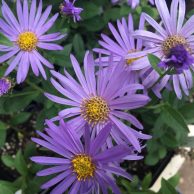
At this time of year, when the weather is hot and mostly dry, it can be easier to establish transplants that already have a larger, deeper root system. Another very important factor in successful transplanting in this heat and drought is the quality of the potting soil the plant was grown in. Harlequin’s Gardens doesn’t use a commercial, lightweight, soil-less mix, designed for using chemical fertilizers and for minimizing shipping costs. [Read More]
Climate Resilient Plants
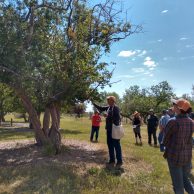 In late June Eve and Mikl attended two inspiring events that are related in that both organizations / institutions are concerned with researching, trialing, and introducing plants that are resilient in the face of the challenges presented by Climate Change, especially increasing heat and long-term drought. [Read More]
In late June Eve and Mikl attended two inspiring events that are related in that both organizations / institutions are concerned with researching, trialing, and introducing plants that are resilient in the face of the challenges presented by Climate Change, especially increasing heat and long-term drought. [Read More]
Fall Sale Updates!

Our 2022 Big Fall Sale continues, with 30% off most plants!
Sept. 13 thru 18 take 30% off perennials, shrubs, and trees, and 20% off roses, soil products in big bags, books, and 20% off Compost Tea. (No discount on fruit trees, veggie starts, bulbs, and 2023 seeds).
We’ve added lots of timely COVER CROP SEEDS and BEEKEEPING SUPPLIES to our DEEP DISCOUNT offers!
In our experience, fall is the most successful time to establish most plants, especially when mycorrhizae are applied to the roots during planting (and we’re well stocked with several types of mycorrhizae!). We have a large and diverse selection of perennials, particularly in larger quart and gallon sizes, that are ready for planting. (Photo: Sedum “Matrona”)
FEATURED PEPPER OFFERINGS – 2024 Newsletter
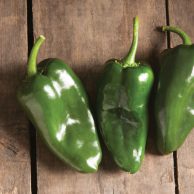
Bastan Pepper, courtesy Johnny’s Seeds
A few of our NEW PEPPERS
BASTAN F-1 ANCHO/POBLANO – New!
65 days green, 85 days ripe (brown) from transplant, Capsicum annuum, F-1 hybrid
An exceptionally early and adaptable poblano pepper, Bastan plants are extremely high-yielding and robust, and produce big, thick-walled, very dark green, smooth, 4-6”-long, mostly two-lobed peppers that are easy to peel. Fruits may be used at the green unripe or chocolate brown stages. Excellent fried, roasted, stuffed, in chile rellenos or green chile sauces. 1,000 – 2,500 SHU. Plants have an upright habit with excellent leaf cover and concentrated fruit set. Fully ripe poblano peppers are traditionally dried and called Ancho.
TAM JALAPENO – New! – 70-75 days from transplant, Hyb., Capsicum annuum, 3,000 – 5,000 Scoville Heat Units
If you love the flavor of Jalapenos but can’t take the heat, perhaps the Tam Jalapeno is for you. Developed by Texas A&M, it was bred to be highly productive, disease-resistant, widely adaptable, early-maturing, thick-walled, and have great Jalapeno flavor with a lower level of heat – only 1,000-1,500 SHUs, much milder than the typical Jalapeno (3,000-5,000 SHUs). TAM Jalapeño can be made even milder by removing the thin membrane that connects the seeds to the wall of the pepper. Plants grow 2-3 feet tall and should be staked. They produce 3”- long plump dark green peppers with smooth, glossy skin. If allowed to turn red, they will be hotter. TAMs are great for mild salsas and dips, delicious added to salads, tacos or pizza, and great for pickling, jelly, and cooking. Try stuffing them with a variety of fillings for appetizers. Top of Form
YANKEE BELL – New Again! –60 days green, 80 days red, OP, Capsicum annuum
A dependable open-pollinated sweet bell for Northern gardeners. Born on 3’ tall plants, the blocky 3-4 lobed fruits are medium sized and a bit smaller than hybrids but have good yields and better quality and uniformity than most OP bell peppers. Great for salads, stuffing, and cooking. Plants have stronger branches than other varieties.
CARIBBEAN HABANERO – New! – 90 days from transplant, Heirloom OP, Capsicum chinense, 400,000 Scoville Heat Units
Twice as hot as the common habanero! Its pungent, smokey, fruity flavor makes extra spicy salsas, marinades and some very intense hot sauces. The red pods are 2″ long and 1″ wide and grow on vigorous, bushy 3 – 4’ plants. It is so productive the plant may need support when loaded with fruit. We recommend wearing latex gloves and other protection when handling these peppers. With a heat level of 400,000 SHUs, these peppers are loaded with capsaicin which can cause irritation and pain when exposed to your eyes and even to your skin.
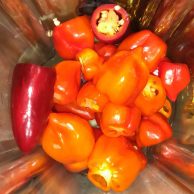
RETURNING FAVORITES: Anaheim, Early Jalapeno, Fish, Sheepnose Pimiento, Serrano Tampiqueno, Jimmy Nardello’s, King of the North, Marconi Red, Sweet Chocolate, Cubanelle and more!
Springtime Pruning for Roses & Flowering Shrubs
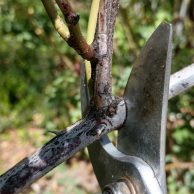 We recently passed Boulder Valley’s “average last frost” date (May 9).With all this rain, it sure feels like Spring! Lots of gardeners are asking if it’s safe to prune now, especially roses and shrubs. The answer is YES! But…..
We recently passed Boulder Valley’s “average last frost” date (May 9).With all this rain, it sure feels like Spring! Lots of gardeners are asking if it’s safe to prune now, especially roses and shrubs. The answer is YES! But…..
Pay attention to the characteristics of the particular shrubs and roses you’re thinking of pruning. [Read More]
Unique Peonies
We have a limited number of choice Peonies in 2-gallon pots, ready to make a long-lived presence in your garden! These varieties are different from the ones we will have in stock in a couple of weeks, which will be in 1-gallon pots.
Peonies are classic garden plants that add a lot of charm and beauty to the garden, increasing in size and beauty for many decades. Their gorgeous, fragrant blooms and lush foliage have made them popular for many years. When a peony is finished blooming, the attractive foliage mound makes a great seasonal ‘shrub’. And, of course, the sensuous flowers make stunning bouquets. Cut them when the buds have swelled and are beginning to open slightly. [Read More]
AURORA
60-75 days, Open Pollinated
A brilliantly ornamental pepper from Mexico, Aurora’s compact, bushy plants are only 12” tall and wide, but they are lit up by dozens of pointy, upright, 1 ½” glossy fruits that look like colored Christmas lights! The peppers ripen from lavender to purple to orange and finally to red, creating an incredibly colorful show as they appear in all stages at once. The plant is perfect for container growing and the fruits make a beautiful salsa.
CUBANELLE Mild Pepper
70-80 Days, Open Pollinated, Heirloom, Very Mild Heat
Also known as “Cuban pepper” and “Italian frying pepper”, Cubanelle is a variety of sweet pepper with just a touch of heat (-1000 on the Scoville scale), commonly used in Cuban, Puerto Rican and Dominican cuisines. When unripe, the 6-8” fruit is light yellowish-green, but turns bright red if allowed to ripen. Prized for its sweet, mild flesh, rich flavor, and pretty colors. Cubanelle is thin-walled, especially suited for quick cooking and has a low water content. Best picked when yellow-green for use in roasting, stuffing, pizza topping, frying, a substitute for Anaheims, or in a yellow mole, and is one of the traditional ingredients in sofrito.
Harvest Guidelines for Vegetable Crops
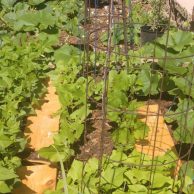 Okay, you prepared your soil and planted your vegetable garden with all kinds of wonderfully flavorful, nutritious foods, you’re watering and watching them grow, and wondering ….. When can I start to eat them, how do I harvest them, and how do I get the most out of these plantings? Here are some tips on vegetable crops harvest timing and techniques that may not be self-evident. Even if you’re a seasoned gardener, you may not be aware of some of these procedures! [Read More]
Okay, you prepared your soil and planted your vegetable garden with all kinds of wonderfully flavorful, nutritious foods, you’re watering and watching them grow, and wondering ….. When can I start to eat them, how do I harvest them, and how do I get the most out of these plantings? Here are some tips on vegetable crops harvest timing and techniques that may not be self-evident. Even if you’re a seasoned gardener, you may not be aware of some of these procedures! [Read More]
Recipes for Health as the Season Changes
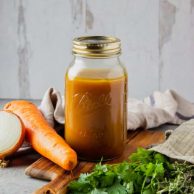
Our friend Mitten Lowe at Journey to Wellness is a fan of bone broth (with actual bones, as well as one that’s vegan) whenever the season changes. What’s more gratifying than taking fresh vegetables and herbs you’ve grown, or bought by supporting our local farmers, and simmering them for a fragrant, nutrient-dense health and spirit builder when the temperatures plummet?
photo courtesy: Garden in the Kitchen
Beet and Nettle Herbal Broth
This mineral-rich, vegan broth offers many of the benefits of traditional bone broth! As we slow down, herbs and plants you grow from Harlequin’s Gardens can nourish you this winter. Many thanks to Mitten Lowe at Journey to Wellness for the recipe.
COLLARD GREENS: Easy to Grow, Nutritious & Delicious
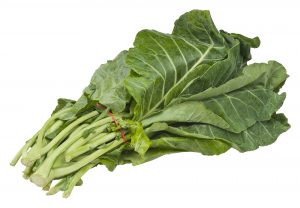
Though commonly associated with culinary traditions of the Southeastern US, collards originated in Europe, along with kale, cabbage etc., and are easy to grow in cooler climates, too.
Grow collards in full sun (for fastest growth), or part shade. Give them plenty of space, 18” apart. Collards appreciate moist, fertile soil with plenty of organic matter (compost) and applications of compost tea. [Read More]
Beloved Monarch Butterflies are now Endangered
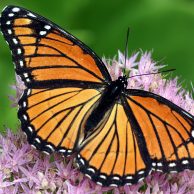 Monarch butterflies previously considered Threatened, have now been classified as Endangered by the International Union for Conservation of Nature, the world’s most comprehensive scientific authority on the status of species. Two major driving factors are habitat loss (and thus, food loss), and climate change.
Monarch butterflies previously considered Threatened, have now been classified as Endangered by the International Union for Conservation of Nature, the world’s most comprehensive scientific authority on the status of species. Two major driving factors are habitat loss (and thus, food loss), and climate change.
“The numbers of Western monarchs, which live west of the Rocky Mountains, plummeted by an estimated 99.9 percent between the 1980s and 2021. While they rebounded somewhat this year, they remain in great peril. Eastern monarchs, who make up most of the population in North America, dropped by 84 percent from 1996 to 2014. The new designation of endangered covers both populations.” (New York Times.) [Read More]
Welcome New Gardeners!
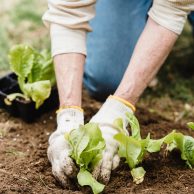 We are here for you! You’re in the high desert/steppe now, with short growing seasons, sudden temperature changes, unpredictable precipitation, low humidity, drying winds, alkaline soils that are low in organic matter and nitrogen, hot summers and cold winters. Despite these challenges, gardens can thrive here, and be productive, rewarding and beautiful!
We are here for you! You’re in the high desert/steppe now, with short growing seasons, sudden temperature changes, unpredictable precipitation, low humidity, drying winds, alkaline soils that are low in organic matter and nitrogen, hot summers and cold winters. Despite these challenges, gardens can thrive here, and be productive, rewarding and beautiful!
Our gardens can support us by providing beauty, nutrient-dense food and plant medicine, and shelter from temperature and weather extremes. At the same time, our gardens can give us an opportunity for nurturing that goes beyond our own garden plants, supporting our entire local ecosystem, including our essential insects, birds, native plants and other wildlife. [Read More]
The Tomatoes are Coming!
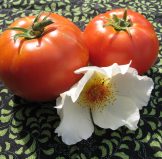 The bad news is that last week’s small delivery of tomato starts froze when the wind blew open the back door of our greenhouse in the middle of the night.
The bad news is that last week’s small delivery of tomato starts froze when the wind blew open the back door of our greenhouse in the middle of the night.
The good news is that the next 38 flats will be ready for sale on Friday! (and there will be many more becoming available through April and May). This week’s tomato starts include: [Read More]
Special Plants to buy now!
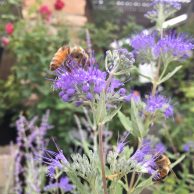 We propagate and grow a lot of great plants here at the nursery, which gives us (and you!) an advantage when the wholesale suppliers run short in mid and late summer. We’re very pleased to have beautiful stock of some highly desirable and hard-to-find shrubs and perennials right now, including some choice native plants, Plant Select® winners, and customer favorites.
We propagate and grow a lot of great plants here at the nursery, which gives us (and you!) an advantage when the wholesale suppliers run short in mid and late summer. We’re very pleased to have beautiful stock of some highly desirable and hard-to-find shrubs and perennials right now, including some choice native plants, Plant Select® winners, and customer favorites.
Here are some brief profiles of some of our best current offerings. And this week, Harlequin’s Members can buy them for 20% off! [Read More]
Supporting our Colorado Trees
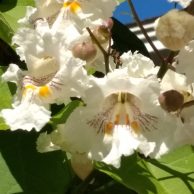 So they can support us!
So they can support us!
Last Friday Denver Botanic Gardens hosted a day-long conference on Tree Diversity. This timely subject arises because of the importance of trees to the livability of our cities and suburbs and the degree to which the effects of Climate Change have already begun to affect our urban forest. Trees help cool everything from our gardens and patios and parking lots to our cities and our planet. With stresses like sudden, dramatic temperature changes, drought, and severe windstorms, plus the devastation wrought by the Emerald Ash Borer to our millions of Ash trees, it’s time to re-evaluate the limited palette of trees we’ve been planting for many decades, and investigate new, more resilient possibilities. [Read More]
Achnatherum calamagrostis UNDAUNTED® Alpine Plume Grass (Alpine Plume Grass) | Warm Season
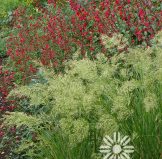
(Photo and description credit: Plant Select.)
Alpine plume grass is a spectacular long-lived grass from high mountain meadows in central and southern Europe. A mature plant makes a dramatic specimen, with several dozen flower heads waving above a graceful fountain of fresh green foliage. The flowers persist from summer until the following spring when the entire plant should be cut back to make room for the new season’s growth. Unlike many other ornamental grasses, the foliage doesn’t die out in the clump’s center over time.

